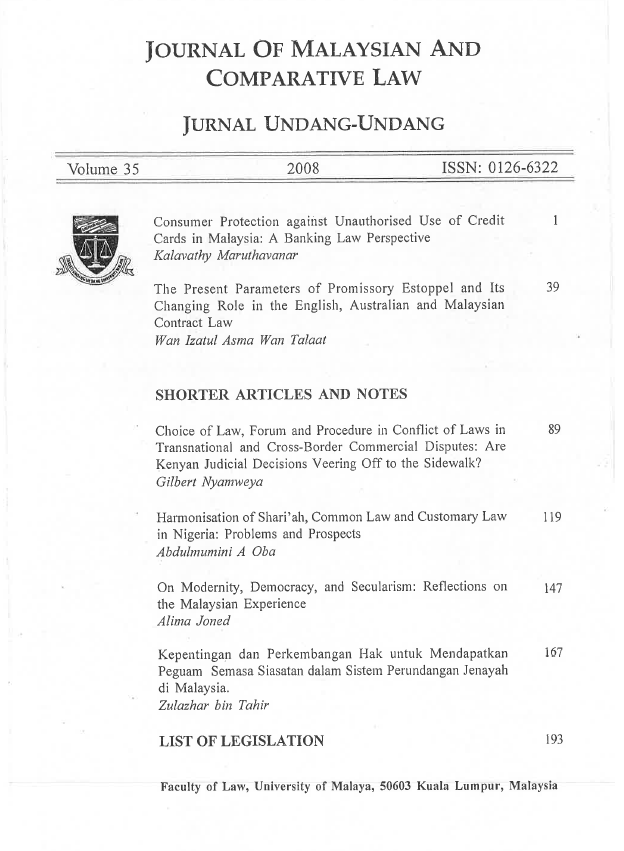The Present Parameters of Promissory Estoppel and Its Changing Role in the English, Australian and Malaysian Contract Law
Abstract
As an equitable doctrine, promissory estoppel traditionally operates to prohibit a contracting party from going back on his earlier promise to suspend or alter his contractual right on the promise, who has detrimentally acted in reliance on such promise. Nevertheless, the continuing evolution of this doctrine after its formal promulgation in 1947b through the High Trees case has led to the changing role of promissory estoppel in contract law. It is presently being applied more flexibly through the compromise made on four of its traditional limitations, which have affected its parameters and resulted in the following phenomenon – the use of promissory estoppel as a sword; the negation of pre-existing contractual relationship; the less stringent requirement of unconscionability in lieu of detrimental reliance; and its extinctive effect. This paper comparatively speaks on the changing role of promissory estoppel in contract law due to its continuing evolution in three common law countries, namely England, Australia and Malaysia.
Downloads



